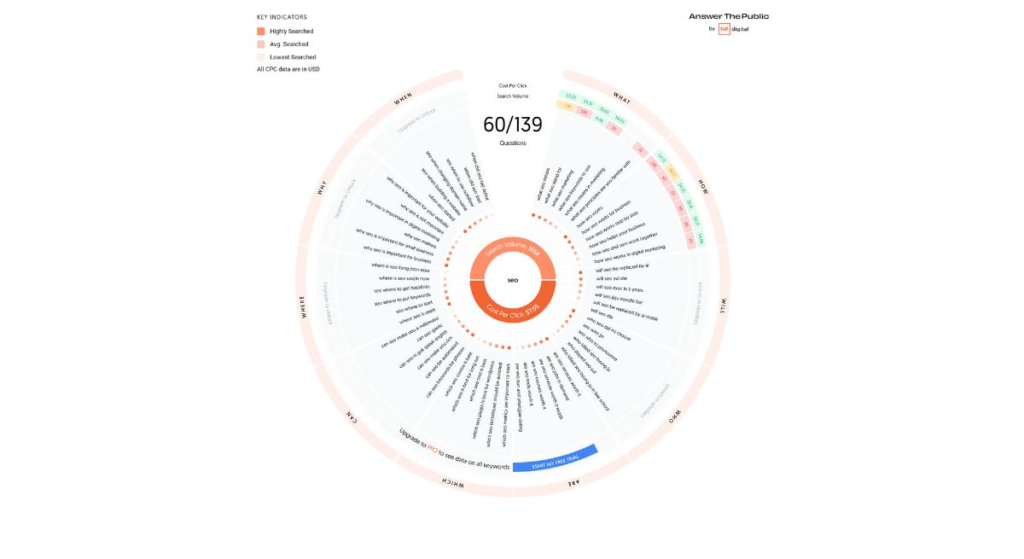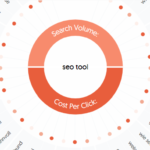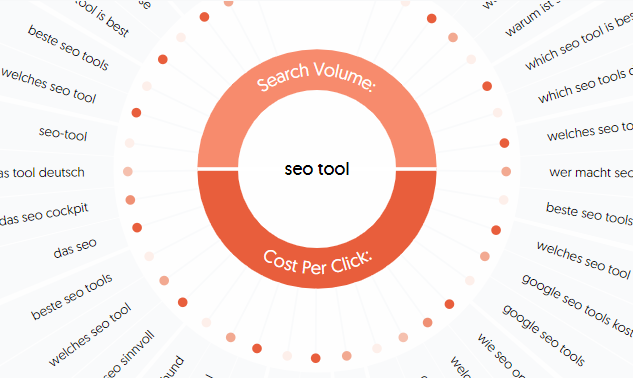Introduction: Why “Answer the Public” Is a Game-Changer for Digital Marketers and Content Creators
Let’s face it—coming up with content ideas that actually resonate with your audience can feel like shooting in the dark. You might write a killer blog post or film a great video, but if no one’s searching for what you’re putting out there, it’s like throwing a party and forgetting to invite people.
That’s where Answer the Public comes in. Answer the Public is more than just a keyword tool; it provides a wealth of insights that assist you in understanding what actual people are searching for online. Think of it as eavesdropping (in a completely ethical way) on your audience’s inner thoughts. It tells you exactly what questions, comparisons, and phrases people are typing into Google related to your topic.

In this guide, we’ll delve into the intricacies of using Answer the Public proficiently, even if you’re just getting started. Whether you’re a content marketer, blogger, YouTuber, SEO strategist, or small business owner, this tool can be your secret weapon for content that connects and converts.
What is Answer The Public? (And Why It’s More Than Just a Keyword Tool)
Let’s start with the basics. Answer the Public is a free keyword research tool that gives you visualized data on what people are searching for online, based on autocomplete data from Google and Bing. But instead of giving you a boring list of keywords, it categorizes them into question-based formats, prepositions, comparisons, and more.
It’s like typing a keyword into Google and watching what pops up in autocomplete—except Answer the Public takes that concept and blows it up to a full-on brainstorm board.
Now, what makes it unique is its visual “mind map” format. You enter a topic or keyword, and boom—you get a circular web of related questions. Things like:
What is [your keyword]?
How does [your keyword] work?
Why is [your keyword] important?
And it doesn’t stop there. You’ll also get:
Prepositions (like “for,” “with,” “to,” “near,” etc.)
Comparisons (e.g., “vs.,” “like,” and “and”)
This visual layout makes it insanely easy to spot content opportunities you may not have even considered.
But here’s the real kicker: people trust content that answers their specific questions. When your blog post, YouTube video, or podcast episode directly addresses something they’ve searched for, they’re more likely to stick around, share it, and convert.
How Answer the Public Works Behind the Scenes
Okay, so let’s geek out for a second. How does this thing actually work?
Answer the Public taps into autocomplete data from search engines like Google and Bing. When you start typing something into the search bar, have you noticed how it instantly starts suggesting completions? That’s the autocomplete feature. It’s based on real user behavior—what others have searched for before.
Answer the Public scrapes this data at scale and organizes it in a way that gives you a ton of content inspiration without the manual labor of typing in every variation of a keyword.
Here’s a quick breakdown of how it categorizes the data:
Questions: who, what, when, where, why, how, which, are, can, will
Prepositions: with, without, for, to, from, near, etc.
Comparisons: vs., like, or, and
Alphabetical: Keyword + A, Keyword + B, and so on
Related searches: Random suggestions Google might think are connected
Now imagine you’re creating content around “plant-based diet.” You’ll see questions like
What is a plant-based diet?
Can a plant-based diet help with weight loss?
Is a plant-based diet healthy?
Boom! That’s like 10 blog posts and video scripts right there.
Why Content Marketers and SEO Pros Love Answer the Public
Let’s talk results. Content marketers are constantly trying to align what they’re creating with what their audience is looking for. Answer the Public helps bridge that gap beautifully.
Here’s how it plays into real-world strategies:
SEO: By using the exact phrases people are searching, you increase your chances of ranking on Google.
Content Planning: It helps brainstorm a full content calendar around a single topic.
Audience Understanding: You start to understand the pain points, questions, and concerns of your audience on a deeper level
Long-tail keyword targeting: These are gold for ranking because they’re specific and often less competitive.
For SEO professionals, it’s especially useful for digging into search intent. Are people looking to buy, learn, compare, or solve a problem? Answer the Public gives you insight into that intent before you even start writing.
Plus, pairing Answer the Public with tools like Google Trends, Ahrefs, or SEMrush can take your keyword game to a whole new level. You get both the what and the why behind the search.
[The full article will continue through the following detailed sections:]
Setting Up and Navigating the Answer the Public Interface
(Detailed walkthrough with practical examples)
Creating Killer Content Ideas from ATP’s Suggestions
(Turning questions into engaging blog/video/podcast content)
Using Answer the Public for SEO Keyword Clustering
(Group related terms and build topic authority pages.)
7. How to Use Answer the Public for YouTube, Podcasts, and Social Media
(Craft titles, captions, and engagement posts that work.)
Answer the Public for E-commerce: Finding Product Content Angles
(Product descriptions, FAQ pages, how-to guides, reviews)
Combining Answer the Public with Other Tools (Ahrefs, SurferSEO, Google Trends)
(Step-by-step process of combining tools for better strategy)
Common Mistakes to Avoid When Using Answer the Public
(And how to actually interpret the data effectively)
11. Advanced Tips & Tricks for Power Users
(Keyword gaps, localization, competitor strategy, seasonal targeting)
12. Real-World Case Studies Using Answer the Public
(How businesses grew traffic by 300% using ATP insight)
13. Answer the Public Pro: Is the Upgrade Worth It?
(Breakdown of free vs. paid features and ROI)
14. Best Practices: How Often Should You Use Answer the Public?
(And when to switch topics, update content, or re-target keywords)
15. Final Thoughts: Is Answer the Public Still Relevant in 2025?
(Spoiler: yes—but only if you use it smartly.)









